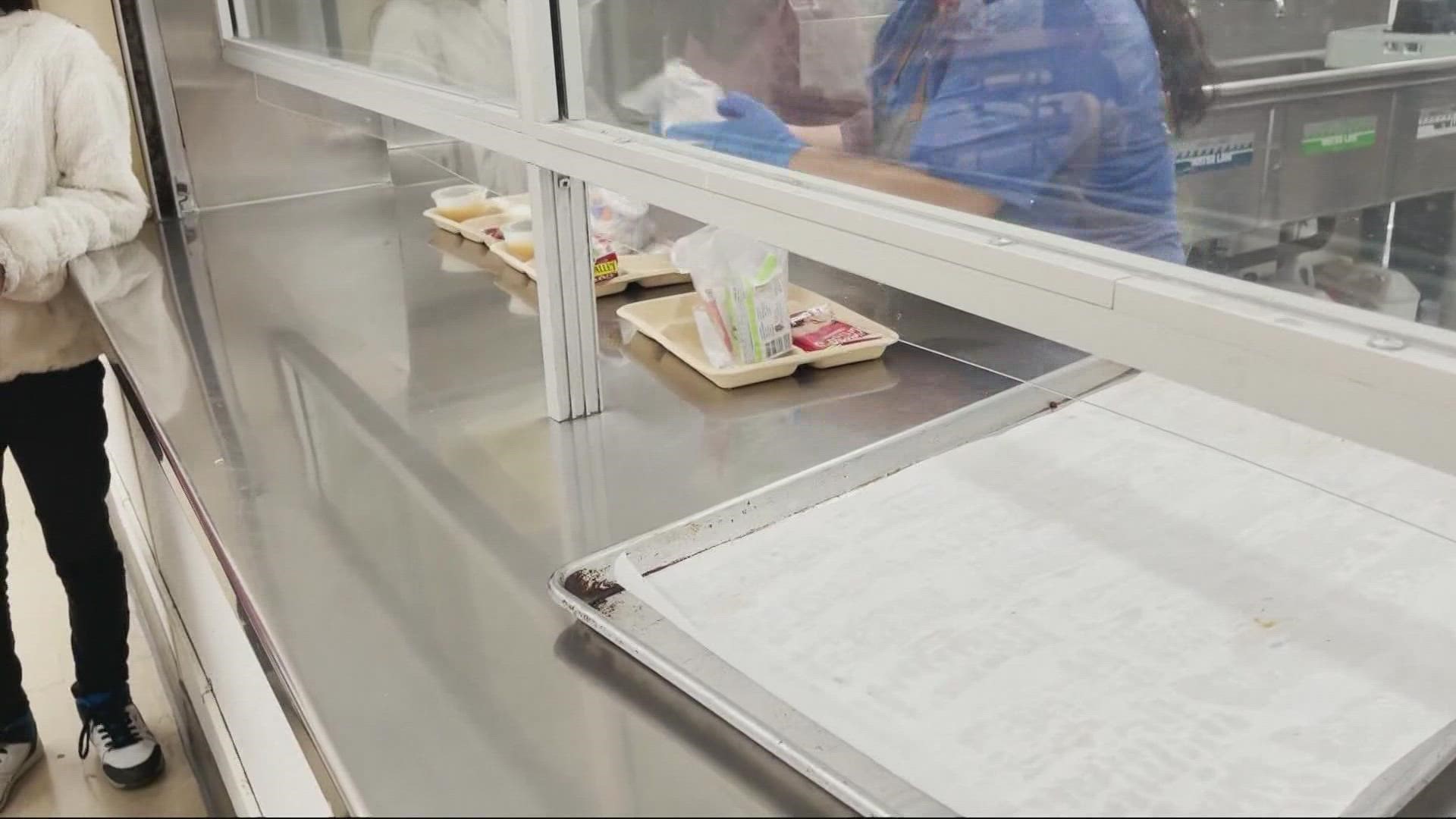SACRAMENTO, Calif. — As schools effort a return to normalcy amid statewide enrollment decline and other direct impacts of the COVID-19 pandemic, districts have seen an uptick in meal participation as a result of a recently implemented state mandate to expand breakfast and lunch access to students.
Universal Meals, a state-funded mandate granting free, nutritionally adequate meals for all students at public schools statewide regardless of income status, went into full effect beginning in the 2022-2023 school year.
Since then, the state's $1.4 billion investment has made a 'historic' return in the form of positive impacts on students and families, according to Kim Fritzell, director of Nutrition Services for the California Department of Education (CDE).
"From July through December of 2022, we served 376.8 million meals," said Frinzell. "We're also seeing a 99% return to pre-pandemic meal participation."
A survey conducted by the Nutrition Policy Institute Universal (NPI) reveals Universal Free Melas for All reduced the student stigma around unpaid meals charges by 46%, in turn increasing students' participation in breakfast and lunch. 66% of students also had unpaid meal charges eliminated completely.
"There's evidence based in research that when students have access to nutritious meals, their performance in school is better," said Frinzell. "All children deserve access to nutritious meals, and that should not be a barrier when they come to school as we want to set them up for success."
With public school students no longer having to go a day during the school week without having a decent meal or worrying about racking up lunch debt, parents have said it's made their lives easier as well.
"It's a great program," said Ashraf Farhad, Washington School District parent. "We don't worry about their food anymore, no lunch box, nothing."
In additon to convenience, the unrestricted access to school meals is directly combating food insecurity and helping families struggling with the rising cost of living.
"Everything is expensive, rent and everything is going up and keeps going" said Farhad "It's helping families with low income or families with less income provide food for their kids."
During the 2022-2023 school year, about 80% of families saved time and money with the help of free school meals, and 75% experienced less overall stress, according to NPI.
This investment encompasses not only access to meals but also has helped districts fund staffing and equipment needed to provide quality food amid a rise in labor and supply costs.
A majority of concerns school nutrition programs initially had with implementing Universal Free Meals include staffing shortages, product availability, inadequate kitchen space and equipment and financial sustainability in the long-run, as revealed in an NPI survey.
"Since 2021, there's been $850 million invested in grant programs to help work on upgrading cafeteria and kitchen infrastructure," said Frinzell. "These additional dollars are to help schools incentivize doing more freshly prepared scratch cooking options for students with locally-sourced food."
One local district that's taking advantage of additional grant funding to improve school meals and nutrition services is Sacramento City Unified School District(SCUSD), a district that provides for over 38,000 students.
"We're really trying to get back to scratch cooking and freshly prepared meals for our students," said SCUSD Nutrition Director, Diana Flores. "We have that same mission and we built a central kitchen, where we're starting to cook from scratch for 40,000 meals a day."
These funds have contributed to not only helping low-income families directly, but also the school disticts making an effort to provide high-quality meals to students.
"Just like every, family we're impacted — food costs are the highest I've ever seen," said Flores. "I've been in this line of work for school nutrition for 15 years, and we've never paid this much for the groceries that we're buying and the food that we're buying."
Flores said over the most recent school year while meals were free for students, in order to keep up with the rising cost of production and labor, the district had to dip into some of its own reserves to cover some reimbursements.
"When the reimbursement rate stays the same and doesn't increase, it's more and more challenging," said Flores. "It takes more labor to prepare a meal from scratch, and when labor is expensive, where's that money going to come from?"
However, according to Flores, the district has since been reimbursed through additional state and federal grant funding to combat those rising costs.
"These one-time funds are still arriving, so there has been welcome help to cover the inflated costs we are experiencing," said Flores.
Despite this challenge, Flores said she believes the Universal Meals program has been overall beneficial to students in SCUSD and across the state.
"There's an equity issue where California families may not qualify, but also cannot afford school lunch or school breakfast," said Flores. "What's great about free meals for all is, there just isn't an issue any longer."
Following the end of the first school year with free lunch, in it's most recent report, the NPI also sites better health and nutrition, improved academic performance and great sociability among students overall.
"There's advocacy at the national level to just do free meals for all nationally," said Flores. "It's gaining a lot of strength, because other states are doing it now."
Since California began making free meals a requirement in its' public schools, eight other states have followed suit including Minnesota, New Mexico, Colorado, Vermont, Michigan, Maine and Massachusetts.
"I'm pretty proud of the State of California for the significant and honestly, historic investments in school meals," said Frinzell.
Watch more from ABC10: Gov. Gavin Newsom highlights California's education transformation investments



















